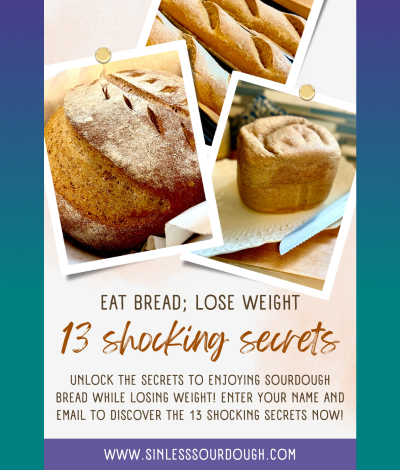Non Alcoholic Wine Explained for Low Carb Sippers

Non-alcoholic wine has become a delightful substitute for those who choose to abstain from alcohol while still wanting to enjoy the rich traditions associated with wine drinking. When I stopped drinking alcohol nearly four years ago, I found that I did not miss the weight gain or the hangovers that often accompanied my former lifestyle. However, I did long for the experiences of wine tours, tastings, and the rituals that come with enjoying wine.
My passion for pairing wine with food was a significant part of my identity, cultivated over a career spanning more than 30 years.The discovery of non-alcoholic wines was a revelation. I was thrilled to learn that these beverages could be just as delicious and satisfying as their alcoholic counterparts.
This realization reignited my enthusiasm for wine, allowing me to indulge in the pleasure of pairing non-alc wines with meals without the negative effects of alcohol.
Today, I relish the experience of enjoying wine with food once again. The joy of pairing non-alcoholic wines with various dishes has restored my passion while eliminating the downsides associated with alcohol consumption.
I hope that by sharing my love for non-alcoholic wines and their compatibility with food, I can inspire you to explore this wonderful alternative and discover your own enjoyment in it. It’s a true joy to be able to enjoy wine with Keto and low-carb dishes.
What Are The Top 10 Takeaways?
- Production Process: Non-alcoholic wine starts as regular wine, then undergoes dealcoholization through methods like vacuum distillation, reverse osmosis, or spinning cone columns.
- Alcohol Content: Despite being labeled “non-alcoholic,” these wines can contain up to 0.5% alcohol by volume, similar to some fruit juices.
- Health Benefits: Non-alcoholic wine may lower blood pressure, reduce heart disease risk, and offer antioxidant benefits without the risks associated with alcohol consumption.
- Calorie Content: It typically contains 3-4 times fewer calories than regular wine, making it a better option for those watching their calorie intake.
- Taste Comparison: While high-quality non-alcoholic wines can mimic traditional wine flavors, they often lack the complexity and mouthfeel that alcohol provides.
- Market Growth: The non-alcoholic wine market is expanding, driven by increasing interest in healthier lifestyles and sophisticated alcohol-free options.
- Intoxication Risk: Due to its low alcohol content, it’s highly unlikely to cause intoxication when consumed in moderation.
- Suitability: Non-alcoholic wine is suitable for a wider range of people, including pregnant women and those who avoid alcohol for various reasons.
- Comparison to Grape Juice: Unlike grape juice, non-alcoholic wine undergoes fermentation, resulting in a more complex flavor profile.
- Consumer Perception: Some people dislike non-alcoholic wine due to altered taste, production challenges, and high expectations set by traditional wines
What Is Non Alcoholic Wine?
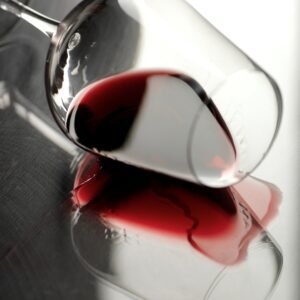
Non-alcoholic wine, often referred to as dealcoholized wine, is produced from wine grapes, fully fermented wine from which the alcohol is subsequently removed. This process allows the wine to retain many of the characteristics of traditional wine, making it a popular choice for you, if you wish to enjoy the flavor of wine without the effects of alcohol.
After the alcohol is removed, winemakers often reintroduce lost aromas and flavors to enhance the final product. Be careful as sometimes these additives like glycerol enhance the wine’s viscosity or mouth feel. Glycerol is an alcohol sugar. It is a carb. But it acts in the body as half the carbs as sugar. (Explained in a little more detail below.)
Alcohol Content:
Legally, a beverage can be labeled as “non-alcoholic” if it contains less than 0.5% alcohol by volume. Most non-alcoholic wines typically have an alcohol content around 0.2%. This is comparable to the alcohol content found in some fruit juices and fermented foods, making it generally safe for those who are avoiding alcohol for health or personal reasons. (Again, be careful as this amount of alcohol can trigger a relapse in alcohol consumption for some people.)
Market Growth and Consumer Interest:
The market for wines without alcohol is expanding, driven by increasing consumer interest in healthier lifestyles and the desire for sophisticated beverage options without alcohol. As a result, the quality of alcohol free wines has improved significantly, with many producers focusing on creating flavorful and aromatic options that do not rely on excessive sugars or artificial additives.
Taste and Quality:
While non-alc wines can be a good alternative for those avoiding alcohol, the taste can vary widely. Some consumers have reported that many non-alcoholic wines taste overly sweet or like diluted grape juice, while others have found certain brands to provide a satisfying experience reminiscent of traditional wines. The challenge for winemakers is in recreating that mouthfeel and complexity that alcohol provides to wines. The absence of alcohol changes the sensory experience. Today many winemakers have mastered a way to remove the alcohol and make the zero alcohol wine taste incredible. It’s important to hunt for brands that are low in sugar that you will enjoy. But it’s this journey of finding the ones you like so fun.
How Is Non Alcoholic Wine Made?
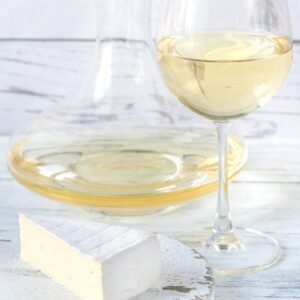
Zero alcohol wine, often misunderstood as merely grape juice, is made through a process that begins with traditional wine grape growing and vinification, followed by the removal of alcohol. Here’s an overview of how non-alcoholic wine is produced, including the methods used and the challenges faced.
Production Process:
- Fermentation: Zero alcohol wine starts its life like regular wine. Wine grapes are nurtured and harvested, crushed, and fermented to produce wine with alcohol content typically between 12% and 14% ABV. This fermentation process develops the wine’s flavors and aromas, which are crucial for the final product.
Alcohol Removal:
After fermentation, the alcohol is removed using one of several methods:
- Vacuum Distillation: In this technique, the wine is placed in a vacuum chamber where it is gently heated to evaporate the alcohol at lower temperatures (around 25°C to 35°C). This method minimizes flavor loss, as the lower temperature helps retain the wine’s aromatic qualities.
- Reverse Osmosis: This method involves passing the wine through a membrane that separates alcohol from other components based on molecular size. The alcohol and some water are removed, and the remaining concentrated wine is then blended back with the water and other components to create the final product. This method is efficient and preserves much of the wine’s original flavor.
- Spinning Cone Column: This advanced method uses a vertical column with inverted cones to separate the wine into its components through centrifugal force and low-temperature evaporation. The aromas and flavors are extracted first and then reintroduced after the alcohol is removed, ensuring a high-quality product.
Challenges in Production:
Removing alcohol from wine is challenging because alcohol contributes significantly to the wine’s mouthfeel, body, and overall flavor profile. The process must be carefully managed to avoid stripping away these essential qualities. Winemakers often need to adjust the balance of sugar, acidity, and other components to compensate for the absence of alcohol, which can alter the wine’s character.
Legal Definitions:
Legally, non-alcoholic wines can contain up to 0.5% ABV to be marketed as “non-alcoholic” or “alcohol-removed” wine. This is important for consumers to note, as some products may still contain trace amounts of alcohol. In summary, non-alcoholic wine is made through traditional winemaking followed by various methods to remove alcohol while striving to maintain the wine’s original flavors and aromas.
Each method has its advantages and challenges, contributing to the diversity of non-alcoholic wine available today.
Does Non Alcoholic Wine Taste Like Real Wine?

Alcohol free wine can indeed taste similar to traditional wine, but there are nuances that differentiate the two.
Taste Comparison:
- Flavor Profile: High-quality non-alcwines often retain a good balance of acidity and can be fruit-forward and sometimes earthy, closely mimicking the flavors found in their traditional counterparts. However, some may taste overly sweet or lack the complexity that alcohol contributes to traditional wines. Its important to find the low sugar versions.
- Mouthfeel: Alcohol adds viscosity and a certain mouthfeel to wine, which is often diminished in zero alcohol versions. This can lead to a different drinking experience, as the absence of alcohol can make the wine feel lighter and less full-bodied.
- Production Process: Non-alc wines are typically made from fully fermented wines from which alcohol is removed using methods like reverse osmosis or vacuum distillation. This process aims to preserve the original characteristics of the wine, but the final product may still differ in taste and texture from its alcoholic counterpart.
- Quality Variations: The quality of dealcoholized wine can vary significantly. Higher-quality brands work hard to recreate the aromas and flavors lost during alcohol removal, while lower-quality options may taste more like grape juice than wine.
Consumer Experience:
Many consumers report that while non-alcoholic wines do not taste exactly like their favorite alcoholic varieties, they can still be enjoyable in their own right. The key is to approach them with the right expectations—understanding that they are different beverages rather than direct substitutes.In summary, non-alcoholic wines can taste like real wine, especially when produced with care and quality ingredients, but they will have distinct differences in flavor, mouthfeel, and overall experience.
Can You Get Drunk From Non Alcoholic Wine?

Non-alcoholic wine, typically containing less than 0.5% alcohol by volume (ABV), is unlikely to cause intoxication. The small amount of alcohol present is generally insufficient to produce a drunken effect, especially when consumed in moderation. However, individual reactions can vary based on factors such as body weight, metabolism, and overall alcohol tolerance.
Key Points:
- Alcohol Content: Non-alcoholic wines are defined as having less than 0.5% ABV, which is significantly lower than regular wines that usually contain around 12% ABV. This minimal alcohol content makes it very improbable for someone to get drunk from consuming non-alcoholic wine.
- Individual Sensitivity: While most people will not feel intoxicated from non-alcoholic wine, some individuals may have heightened sensitivity to alcohol, and consuming large quantities could potentially lead to mild effects.
- Placebo Effect: Some people may report feeling buzzed after drinking non-alcoholic beverages due to psychological factors rather than actual intoxication. This phenomenon is tied to expectations and past experiences with alcohol, rather than the presence of alcohol itself.
Is Non Alcoholic Wine Healthier Than Alcoholic Wine?

Non-alcoholic wine does offer some health benefits compared to regular alcoholic wine, though the research is still limited. Here’s an overview of how non-alcoholic wine compares health-wise to regular wine:
Key Health Benefits of Non-Alcoholic Wine:
Lower Blood Pressure:
Studies have found that non-alcoholic red wine may be more effective at lowering blood pressure compared to regular red wine. The polyphenols in wine, which remain after alcohol removal, appear to be responsible for this effect.
Reduced Risk of Heart Disease and Stroke:
Non-alcoholic wine can help reduce the risk of heart disease by about 14% and strokes by up to 20%, according to some research. This is likely due to the antioxidants and polyphenols present in the wine.
Fewer Calories:
Non-alcoholic wine typically contain far fewer calories compared to regular wine. This makes it a better option for those of us on a Keto or low-carb diet.
Antioxidant Benefits:
Non-alcoholic wine retains many of the beneficial antioxidants found in regular wine, including polyphenols like resveratrol. These compounds have been associated with various health benefits, including reduced inflammation and improved heart health.
Advantages Over Alcoholic Wine:
No Alcohol-Related Risks: By removing alcohol, wine without alcohol eliminates the risks associated with alcohol consumption, such as liver damage, addiction, and impaired judgment.
Suitable For More People: Non-alcoholic wine can be consumed by a wider range of people, including pregnant women, those on certain medications, and individuals who choose not to drink alcohol.
Better Sleep and No Hangovers: Without alcohol, you’re likely to experience better sleep quality and avoid hangovers.
Considerations:
While non-alcoholic wine offers several health advantages, it’s important to note:
- Non-alcoholic wine may contain slightly more carbohydrates than regular wine. Read the label!
- Some non-alcoholic wines may contain additives for preservation or flavor enhancement.
- Individuals with diabetes should be cautious due to the sugar content in some zero alcohol wines.
What Are The Benefits Of Drinking Non Alcoholic Wine?

Non-alcoholic wine offers several health benefits that make it an appealing alternative to traditional alcoholic wine. Here are the key advantages:
Health Benefits of Non-Alcoholic Wine:
- Lowers Blood Pressure: Studies have shown that non-alcoholic red wine can boost nitric oxide levels, which helps lower blood pressure. Research indicates a potential reduction in heart disease risk by 14% and stroke risk by 20% among those consuming non-alcoholic red wine compared to those drinking alcoholic wine.
- Reduced Cancer Risk: Alcohol consumption is linked to several types of cancer. By switching to non-alcoholic wine, individuals can lower their risk of developing alcohol-associated cancers, as the absence of alcohol mitigates this risk.
- Lower Caloric Intake: Non-alcoholic wine typically contains 70-80% fewer calories than regular wine, making it a suitable option for those looking to manage their weight.
- No Hangovers: Since non-alcoholic wine contains little to no alcohol, it eliminates the risk of hangovers, allowing for a more pleasant experience without the negative aftereffects of alcohol consumption.
- Antioxidant Properties: Non-alcoholic wine retains many of the beneficial polyphenols found in traditional wine, such as resveratrol, which are known for their antioxidant effects. These compounds can help reduce oxidative stress and improve overall health.
More Health Benefits:
- Improved Heart Health: The polyphenols in non-alcoholic wine can promote heart health by improving cholesterol levels and reducing the risk of blood clots.
- Potential Anti-Diabetic Effects: Some studies suggest that non-alcoholic wine may help reduce the need for diabetes medications and mitigate the harmful effects of Type 2 diabetes.
- Supports Immune Function: The antioxidants present in non-alcoholic wine can enhance immune response and may protect against certain illnesses, including the common cold.
- Safe for Various Populations: Non-alcoholic wine is suitable for pregnant women, individuals on medication, and those who need to avoid alcohol for health or personal reasons, making it a versatile option for social occasions.
- Pleasurable Experience: Non-alcoholic wine allows individuals to enjoy the taste and experience of wine without the intoxicating effects, making it a great choice for socializing without the downsides of alcohol.
How Does Non Alcoholic Wine Compare To Grape Juice?
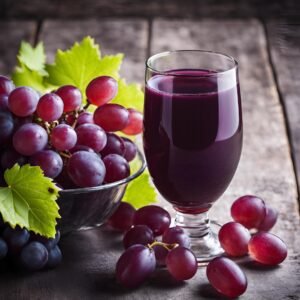
Non alcoholic wine and grape juice, while both derived from grapes, differ significantly in their production processes and flavor profiles.
Production Process:
- Eating Grapes and Grape Juice: Grapes are not all the same; some are meant for eating while others are cultivated for winemaking. Eating grapes, such as Thompson Seedless or Red Globe, are bred for sweetness and crispness, making them juicy and pleasant to snack on. These are the same grapes turned into grape juice.
- Wine Grapes: Wine grapes like Cabernet Sauvignon and Pinot Noir are typically smaller, have thicker skins, and contain more seeds, resulting in a tart or astringent flavor when eaten raw. This is largely due to their purpose: wine grapes possess a lower sugar content, which is crucial for fermentation, allowing for the development of complex flavors. Additionally, while table grapes are larger and have thinner skins, making them easy to bite into, wine grapes are designed to withstand fermentation and contribute to the wine’s body and mouthfeel. Understanding these distinctions enhances our appreciation of both types of grapes, whether we are enjoying a refreshing snack or savoring a fine glass of wine.
- Non-Alcoholic Wine:
- Non-alcoholic wine is produced through a process similar to that of traditional wine, which includes fermentation. The grapes are harvested, crushed, and fermented, allowing the development of complex flavors. After fermentation, the alcohol is removed through methods such as distillation or filtration, resulting in a beverage that retains many of the aromatic properties and flavors of wine.
- Grape Juice:
- In contrast, grape juice is simply the unfermented juice of grapes. The grapes are crushed and pressed to extract the juice, which is then pasteurized to prevent fermentation. This process captures the natural sweetness and flavor of the grapes without the complexities developed during fermentation.
Flavor Profiles:
- Complexity: Non-alcoholic wine tends to have a more intricate flavor profile due to the fermentation process, which enhances its aroma and taste. This complexity makes it more akin to traditional wine, appealing to those who enjoy the nuances of wine tasting.
- Sweetness: Grape juice often contains higher sugar levels, as it retains the natural sugars from the grapes without the fermentation process converting them into alcohol. Non-alcoholic wines can vary in sugar content, with many brands aiming for lower sugar levels compared to grape juice.
Nutritional Aspects:
- Sugar Content: Grape juice typically has a higher sugar content, which can be a consideration for those monitoring their sugar intake. Non-alcoholic wines may have added sugars, but many brands focus on creating drier options with less sugar.
- Health Benefits: Both beverages can be enjoyed without the effects of alcohol, but non-alcoholic wine may offer some additional benefits associated with the antioxidants found in fermented grape products, similar to those in traditional wine.
Why Do Some People Dislike Non Alcoholic Wine?

The dislike for zero alcohol wine among some consumers can be attributed to several factors related to taste, texture, and the overall experience of drinking wine.
The Appeal of Non-Alcoholic Wine in a Health-Conscious Lifestyle:
Many people initially find non-alcoholic wine unappealing due to the altered flavor profile resulting from alcohol removal. Alcohol contributes significantly to a wine’s body, texture, and aromatic qualities, with its absence most noticeably affecting the wine’s weight. Non-alcoholic wines typically range from light to medium-bodied, lacking the full-bodied character of their alcoholic counterparts.However, this perceived drawback aligns well with health-conscious lifestyles, particularly those following Keto or low-carb diets. These diets emphasize consuming more healthy fats and fewer saturated fats. Interestingly, dishes rich in healthy fats pair excellently with light to medium-bodied wines, both white and red.
Personal Perspective:
In my experience, the craving for full-bodied wines often accompanied meals high in saturated fats, such as beef. As I’ve transitioned to a healthier lifestyle, I now enjoy grass-fed beef only once a month, finding that it pairs wonderfully with a medium-bodied red wine.Ultimately, I’ve found that any perceived loss in not having full-bodied wines is insignificant compared to the benefits of improved health and well-being. My focus has shifted from momentary taste bud pleasures to long-term health maintenance, making the transition to non-alcoholic wines a natural and satisfying choice.This approach not only supports a healthier lifestyle but also demonstrates how our palates and preferences can adapt to align with our wellness goals.
Production Challenges:
The process of creating alcohol free wine is inherently challenging. Wine typically contains around 14% alcohol, which plays a crucial role in its overall character. When alcohol is removed, much of the mouthfeel and aromatic quality is lost, making it difficult to produce a satisfying alternative. Experts note that the techniques used to dealcoholize wine often result in a product that lacks the essential qualities that define good wine.
Consumer Expectations:
Many consumers have high expectations for wine, shaped by their experiences with alcoholic varieties. When they try non-alcoholic options, they often find them lacking in comparison, leading to disappointment. Some sommeliers and wine experts have expressed skepticism about the quality of zero alcohol wines, stating that they have yet to find any that match the experience of traditional wines. Personally, this is not an issue for me. As a wine writer for over 30 years, I can say that non alcoholic wines produced together can be incredible, depending on the brand.
Market Perception:
The “perception” of alcohol free wine as a lesser product also affects consumer attitudes. But this is changing as the market for alcohol free wine continues to expand and grow. Every year wines with zero alcohol are getting better and better. T We are at the beginning of a transformation toward living a healthier lifestyle.
What Is The Alcohol Content In Non Alcoholic Wine?

Non-alcoholic wine, often referred to as dealcoholized wine, typically contains a small amount of alcohol. The legal definitions and regulations for these products vary between the United States and Canada:
United States Regulations:
In the United States and Canada, the term “non-alcoholic” can be used for beverages containing less than 0.5% alcohol by volume (ABV). This means that wines labeled as “non-alcoholic” or “dealcoholized” may contain up to 0.5% ABV.
What Non Alcoholic Sparkling Wines Low In Sugar Should You Try?
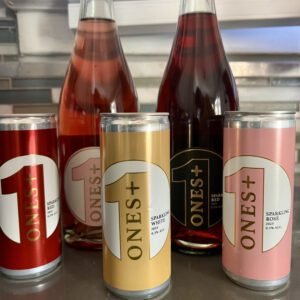
Sparkling Wines:
Here is a list of low sugar non alcoholic sparkling wines:
- ONES Sparkling White: 9.6 calories and 0g sugar per 100mL
(For a 10% discount on ALL Ones Sparkling Wines)
- ONES Sparkling Rosé: 7.2 calories and 0g sugar per 100mL
(10% discount on ALL Ones Sparkling Wines)
- ONES Sparkling Red: 7.2 calories and 0g sugar per 100mL
(ALL Ones Sparkling Wines 10% discount)
- Sovi Sparkling Wine: 10 calories and 1.3g sugar per 100mL
- Joyus Sparkling White: 12.5 calories and 2.5g sugar per 100mL
- Joyus Sparkling Rose: 12.5 calories and 2.5g sugar per 100mL
- Noughty Sparkling Chardonnay: 14 calories and 2.9g sugar per 100mL
- Thomson & Scott Noughty Sparkling Chardonnay: 14.4 calories and 3.2g sugar per 100mL
- Château del ISH (Sparkling Rosé): 20 calories and 3.9g sugar per 100mL
- Edanvale Sparkling Cuvee Spanish: 24 calories and 3.8g sugar per 100mL
- Edenvale Sparkling Rose: 36 calories and 3.8g sugar per 100mL
- Oddbird Non-Alcoholic Sparkling Rosé: 19.4 calories and 4.4g sugar per 100mL
- Edenvale Non Alcoholic Rose: 21 calories and 4.6g sugar per 100mL
- Edenvale Sparkling Shiraz: 21 calories and 4.7g sugar per 100mL
- Edanvale Sparkling Cuvee: 23 calories and 5.1g sugar per 100mL
What Non Alcoholic White Wines Low In Sugar Should You Try?
Here is a list of low sugar non alcoholic white wines:
Whites (from lowest to highest sugar per 100 mL):
- The Expedition Series Non-Alc Verdejo Sauvignon Blanc: 24 calories and 0g sugar per 100mL
- Sovi Chenin Blanc: 10 calories and 1.3g sugar per 100mL
- Edenvale Semillon Sauvignon Blanc: 8 calories and 1.6g sugar per 100mL
- Giesen Sauvignon Blanc: 12.5 calories and 1.75g sugar per 100mL
- Brochet Zero Organic Sauvignon Blanc: 8 calories and 1.8g sugar per 100mL
- Noughty Blanc De-alcoholised White Wine: 17 calories and 2.0g sugar per 100mL
- Princess Alternativa Bianco Dry Non-Alcoholic White Wine: 17 calories and 2.6g sugar per 100mL
- Edanvale Pinot Gris: 13 calories and 2.8g sugar per 100mL
- Lautus Chardonnay: 20 calories and 2.8g sugar per 100mL
- Edenvale The Spanish Expedition Series Verdejo Sauvignon Blanc: 17 calories and 3.6g sugar per 100mL
- Edenvale Non-Alc Chardonnay: 18 calories and 3.9g sugar per 100mL
- Leitz Eins Zwei Non-Alc Riesling: 24 calories and 4.9g sugar per 100mL
- Edenvale Blanc de Blanc Premium Reserve: 23 calories and 5.2g sugar per 100mL
- Luminara Napa Valley Chardonnay Dealcoholized: 18 calories and 5.2g sugar per 100mL
- Le Petit Beret Virgin Sauvignon Blanc: 25 calories and 6.2g sugar per 100mL
What Non Alcoholic Rose Wines Low In Sugar Should You Try?
Here is a list of low sugar non alcoholic rose wines:
Rosés (from lowest to highest sugar per 100 mL):
- Sovi Sparkling Rose: 10 calories and 1.3g sugar per 100mL
- Joyus Rose: 10 calories and 2g sugar per 100mL
- Noughty Non-Alcoholic Sparkling Rosé: 18 calories and 4g sugar per 100mL
- Wölffer Spring in a Bottle Non-Alcoholic Rosé: 24.5 calories and 4.8g sugar per 100mL
- Edenvale Rose: 22 calories and 5.5g sugar per 100mL
What Non Alcoholic Red Wines Low In Sugar Should You Try?
Here is a list of low sugar non alcoholic red wines:
Reds (from lowest to highest sugar per 100 mL):
- YOURS Non-Alcoholic California Red Blend: 6.8 calories and 0.68g sugar per 100mL
- Sovi Reserve Red: 10 calories and 1.3g sugar per 100mL
- Joyus Cabernet Sauvignon: 16.7 calories and 1.3g sugar per 100mL
- Alcohol Removed Cabernet Sauvignon: 13.3 calories and 1.3g sugar per 100mL
- Edenvale Non-Alcoholic Grenach Shiraz Mataro: 10 calories and 1.8g sugar per 100mL
- Naughty Red: 14 calories and 2.5g sugar per 100mL
- Lautus Non-Alcoholic Red: 12 calories and 3g sugar per 100mL
- Edenvale Non-Alcoholic Tempranillo Cabernet Sauvignon: 14 calories and 3g sugar per 100mL
- Luminara Red Blend: 20 calories and 3.2g sugar per 100mL
- Edenvale Shiraz: 17 calories and 3.8g sugar per 100mL
- Edenvale Cabernet Sauvignon: 18 calories and 3.9g sugar per 100mL
- Edenvale Premium Reserve Pinot Noir: 20 calories and 4.3g sugar per 100mL
- Leitz Eins-Zwei-Zero Pinot Noir: 21 calories and 4.9g sugar per 100mL
What Keto Low-Carb Blogs Should I Read?
Here are a few other blogs about non alcoholic wines that I think you may enjoy:
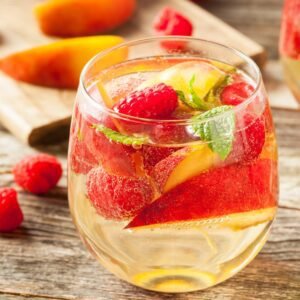
- 10 Unique & Healthy Moctails You Need To Try
- Cracking The Code Of Pairing Non Alcoholic Wines With Cheese
- Secrets To Pairing Alcohol-Free White Wines with Seafood Delights
- How To Choose The Best Zero Alcohol Red Wine
- ONES Sparkling Rose & Lemon-Ginger Cod
I’m excited to share with you my good news… Introducing Sinless Sourdough – Where Ancient Art Meets Low Carb Science!

Stop sacrificing flavor for your health goals – our authentic heritage sourdough starters have been specially adapted for low-carb baking
Limited Time Offer: 82% OFF – Only $19.99 Today (Regular Price: $113)
Sinless Sourdough™ Starter + Membership Includes:
- Authentic Heritage Starter shipped directly to your door
- Complete Video Training Library showing you step-by-step how to create:
- Artisan boules and batards with delicious crispy crust and soft interior
- Crisp French baguettes for the dinner table or as crostini
- Chewy Montreal-style bagels that won’t spike your blood sugar
- German street pretzels with authentic alkaline crust
- Convenient everyday bread machine loaves for sandwiches
- Supportive Community of fellow low-carb bakers to share your journey
- Extensive Recipe Collection for using sourdough discard (nothing goes to waste!)
“After years of disappointing low-carb bread experiments, Sinless Sourdough changed everything. I’m enjoying real sourdough again without the carb guilt!” — Maria T.
“My family can’t tell the difference between these loaves and traditional bread. The starter is incredibly active and the results are amazing!” — James K.
🔥 CLAIM YOUR MEMBERSHIP NOW 🔥
Use code: Sinless82 at checkout Offer expires soon! Limited starter batches available
82% OFF TODAY FOR MEMBERSHIP
Sinless Sourdough™ Heritage Collection

Transform your low-carb baking with our Global Heritage Collection featuring unique starters from historic moments across continents. Each brings its own personality and flavor profile while maintaining excellent nutritional values—just 1g net carbs compared to 8-10g in traditional starters.
Choose from:
- 1849 San Francisco Gold Rush – Authentic California sourdough character
- 1898 Yukon Gold Rush – Subtle tanginess with notes of butter
- 1847 Oregon Trail – Rustic character with exceptional rise
- 1000-Year-Old Italian Monastery – Delicate complexity with ancient lineage
Each starter connects you to centuries of baking tradition while supporting your modern low-carb lifestyle. Our proprietary transformation process preserves their unique characteristics while adapting them for health-conscious baking.
When you purchase any Sinless Sourdough™ starter, you receive our comprehensive onboarding sequence teaching you exactly how to revive your dehydrated starter for perfect low-carb, high-protein results every time.
Click the link:
SINLESS STARTER SHOP
🍞 START YOUR LOW-CARB SOURDOUGH JOURNEY TODAY! 🍞
Medical Studies and Reviews on Sourdough
Here they are:
Does Sourdough Bread Provide Clinically Relevant Health Benefits?
The Sourdough Microbiome
Study Of Sourdough Starter Microbiome To Boost Bread Quality and Safety
Sourdough Microbiome Comparison and Benefits
Effect of Breadmaking Process on In Vitro Gut Microbiota Parameters in Irritable Bowel Syndrome
Nutritional Benefits of Sourdough; Systematic Review
Sourdough-leavened bread improves postprandial glucose and insulin plasma levels in subjects with impaired glucose tolerance
Use of sourdough in low FODMAP baking
A novel formulation of sourdough bread enriched with plant sterols and high-fibre inulin improves metabolic control in type 2 diabetes
Impact of sourdough fermentation on appetite and postprandial metabolic responses – a randomised cross-over trial with whole grain rye crispbread
Disclaimer:
All information provided on this website regarding the health benefits of sourdough low carb bread is intended for educational purposes only. The content presented is not meant to be taken as specific medical advice for any individual. It should not be considered a replacement for professional medical guidance or treatment. If you have any health concerns, especially related to diabetes, pre-diabetes, or any other medical condition, please consult with a healthcare professional immediately.
- UNUSUAL KETO INSTANT POT RECIPES FOR 2025 - April 27, 2025
- Boost Your Keto Diet with These Non-Alcoholic Wine Hacks - April 27, 2025
- 10 Unique & Healthy Mocktails You Need to Try - April 27, 2025


